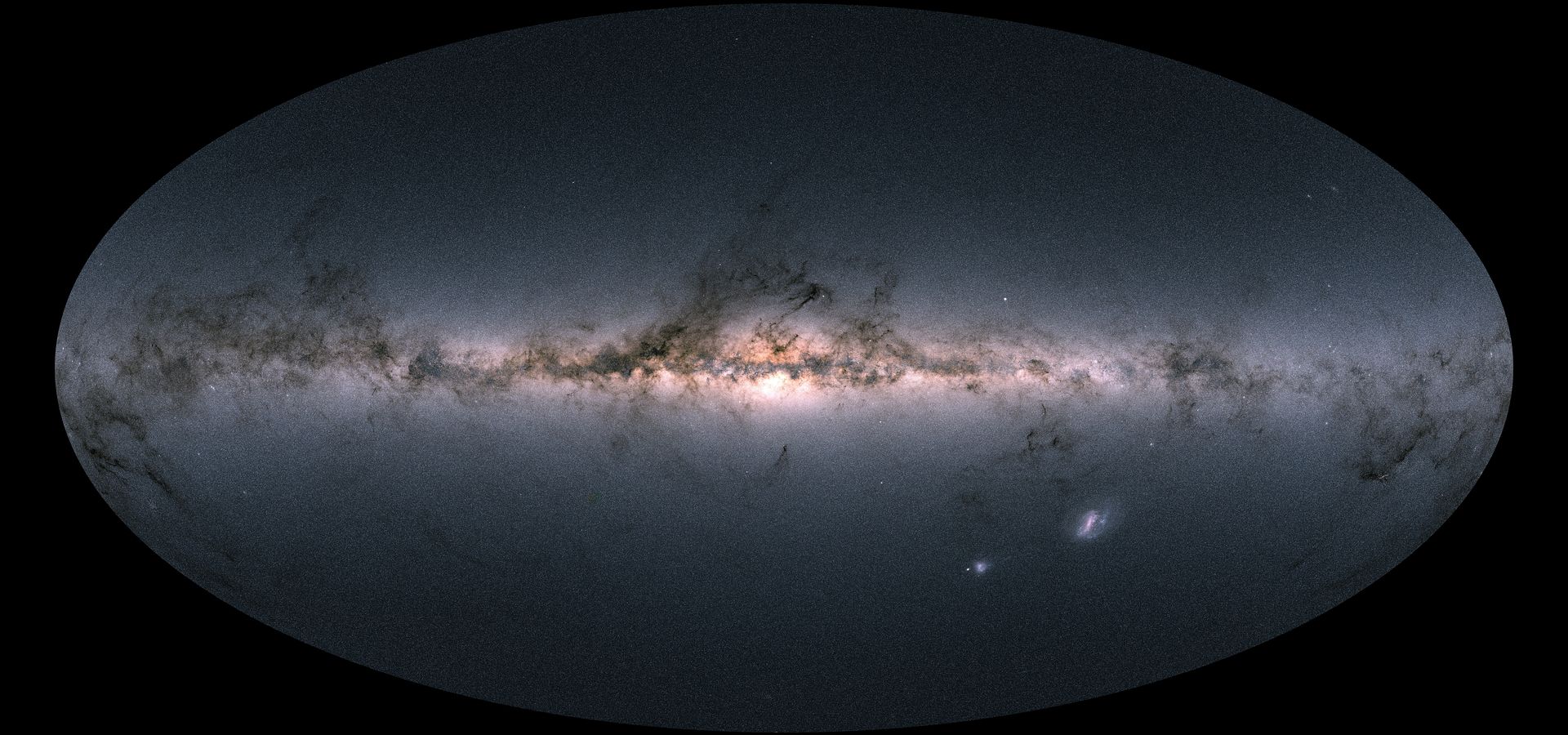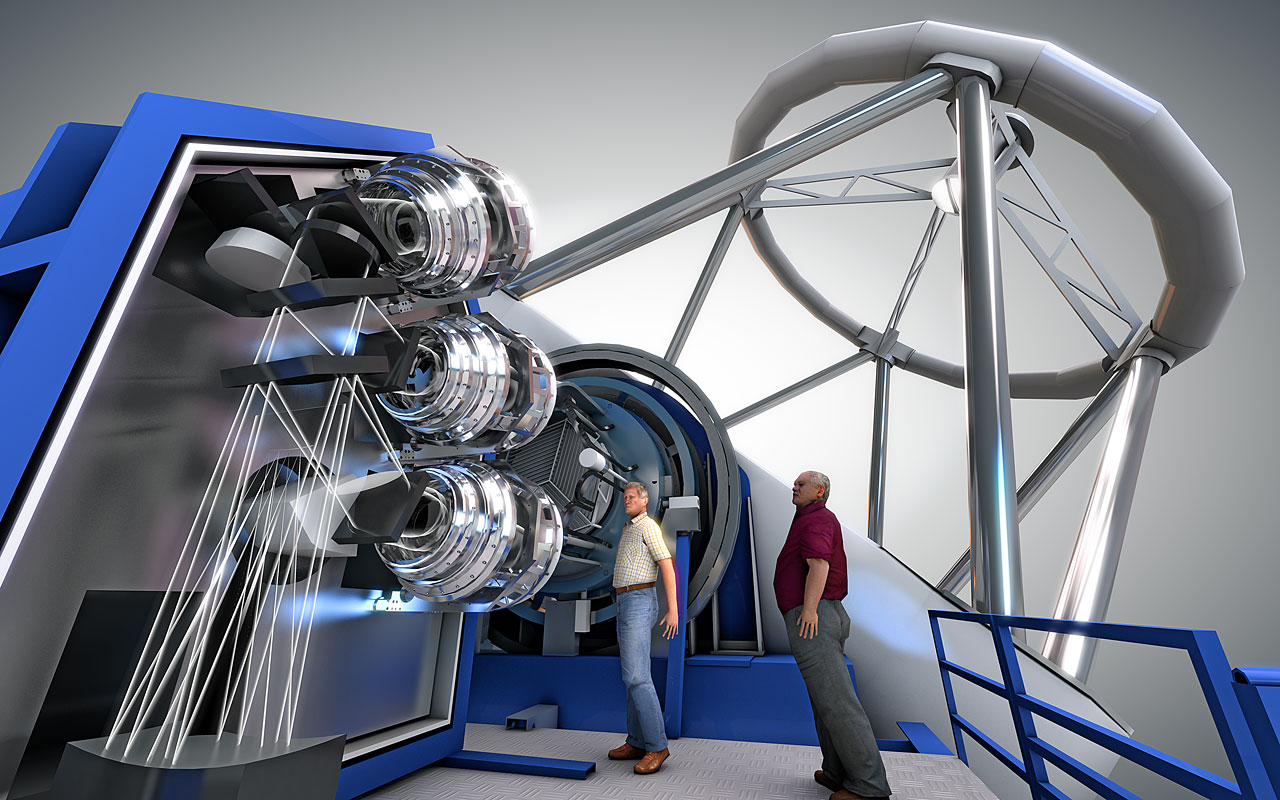- What Gaia’s mission is and what it has discovered so far
- How ESA and ESO collaborate to allow Gaia to make amazing observations
Q: Firstly, could you explain what Gaia is and what kind of data it collects?
A: Gaia is an astrometric mission from the European Space Agency that has been in the making for decades. It was launched at the end of 2013 and since then it has been using its two telescopes to very precisely measure the position, motion and brightness of more than a billion stars in our galaxy, the Milky Way. At the end of the mission, it will provide us with the most precise 3D map of our galaxy ever made.
Q: In 2016, ESA released the first data set from Gaia. In April this year, the second data set was released — how does it differ?
A: In Gaia data release 1, only the positions of most of the objects that Gaia could detect were provided. In data release 2, however, things start to become much more interesting, as Gaia is now providing estimates of the distance, the motion and the brightness for a large subset of stars. The dataset has information on the position and brightness of 1.7 billion stars, the parallax and motion of 1.3 billion stars, the surface temperature of over 100 million stars and the effect of interstellar dust on 87 million stars. Gaia has even given us some information about other objects like asteroids within our Solar System, far-off quasars, globular clusters within our own galaxy and dwarf galaxies orbiting it.
Q: Why is this extra information so important to astronomers?
A: Knowing the distance to a star is a crucial piece of information — without a star’s distance, it is hard to do any astronomy. In fact, one could say that astronomy has always been about tackling the challenges of measuring astronomical distances! If you only see the brightness of a star but don’t know how far away it is, it’s hard to understand what kind of object it is. It’s like when you see a light at night time. It could be someone walking with a small flashlight a few metres away or it could be a lighthouse located tens of kilometres away!
Once you know the distance to a star, it is possible to know if it is intrinsically bright or faint. You can also determine other properties such as the star’s mass, whether it is still in its infancy or if it will soon explode as a supernova. Distances are also needed to know the size of the Universe, whether it is expanding, and by how much.
Q: What role does ESO play in the Gaia mission?
A: ESO has been involved in the Gaia mission in several ways. The first one is the Ground-Based Optical Tracking programme, or GBOT. This involves tracking the position of the Gaia satellite using the 2.4-metre VLT Survey Telescope (VST) at ESO’s Paranal Observatory in Chile.
The second major involvement of ESO telescopes is in the Gaia–ESO public spectroscopic survey.
Moreover, ESO astronomers are interested in using Gaia data not only for their science, but also for operations. For example, it’s planned that the Gaia catalogue will be used as the basis of guide stars for ESO’s Very Large Telescope and Extremely Large Telescope. These telescopes need to use guide stars to precisely track the movement of the sky and keep their desired targets fixed in their field of view.
Finally, ESO is also co-organising a scientific workshop in September 2018 that will focus on the advances in our understanding of stellar physical processes, made possible by combining the astrometry and photometry of Gaia with data from other large photometric, spectroscopic, and asteroseismic stellar surveys.
Q: Could you explain further about the Ground-Based Optical Tracking programme?
A: Gaia is the most accurate astrometric device ever built, but in order for its observations to be useful astronomers analysing the data need to know exactly where it is in the Universe. Its position needs to be known to an accuracy of 150 metres (a challenge given that it is 1.5 million kilometres away) and the velocity needs to be measured with an accuracy of 0.009 km/h!
The only way to know the velocity and position of the spacecraft with very high precision is to observe it on a daily basis from the ground. But the usual ESA tracking stations are not sufficient for this, so the consortium turned to the VST to track the satellite. So, since the launch of Gaia at the end of 2013, the VST has been taking images of Gaia every other night.
Q: Why is the VST used instead of other ESA tracking stations?
A: The ESA tracking stations are radars that rely on measuring the radial velocity of the satellites. They are extremely precise, but only for the motion towards us. In order to obtain the real position of an object in space, one would need to combine observations of two such tracking stations. This is, however, very time consuming — and these tracking stations are required for all the other satellites of ESA as well. So it’s not possible to monopolise them for Gaia.
The consortium of astronomers in charge of analysing the Gaia data came up with another solution — using a 2-metre class telescope to track the satellite. They mostly use the VST for this, as well as the Liverpool Telescope located on the Canary island of La Palma, Spain. The VST is particularly suited for this task because it can take images of a very large area of the sky. In fact, as an aside, because of this capability, the VST takes images of dozens of asteroids every time it captures the Gaia satellite! In three years, it has discovered almost 9000 asteroids.
Q: Tell us more about the Gaia–ESO public spectroscopic survey. What value does it add to the Gaia data?
A: The Gaia–ESO public spectroscopic survey obtained high-quality spectroscopy of about 100 000 stars in the Milky Way with the FLAMES instrument on the VLT. The survey spanned six years and used more than 300 nights of telescope time. These spectra allow astronomers to determine the chemical composition and the radial velocities of the stars. Although Gaia is able to take spectra, it can only do so for the brightest stars and in a very limited spectral range. So there was a need to obtain more precise data for fainter stars, in order to systematically cover all major components of the Milky Way, from the halo to clusters of stars to star-forming regions. When combined with the distances measured by Gaia, the survey will quantify the formation history and evolution of young, mature and ancient galactic populations, providing unprecedented knowledge of the evolution of our galaxy and its stars. This creates a legacy dataset that adds enormous value to the Gaia mission.
Q: What will the future role of ESO be in relation to the Gaia mission?
A: ESO will of course continue to track the Gaia satellite for several years, but ESO telescopes will be needed for following up many of the targets that Gaia has found to be particularly interesting (and there will be many!). Gaia should lead to the discovery of thousands of exoplanets, tens of thousands of brown dwarfs, more than 20 000 exploding stars, and countless numbers of variable and binary stars, as well as 500 000 distant quasars. Astronomers will most likely want to study many of these in detail. This will require high-multiplex instruments, so the future MOONS on the VLT and 4MOST on VISTA are going to play an important role. And of course, for many decades to come, astronomers will use the distances provided by Gaia to better understand their favourite objects.
Q: What excites you most about Gaia, and in particular about ESO’s involvement?
A: The sheer amount of data that comes out of Gaia is truly amazing. To know that we will soon have a full understanding of our own galaxy and the myriad stars it contains is mind-blowing!
I am rather proud that ESO is playing a role in this by tracking the satellite, but as an astronomer I am also very keen to use the Gaia data. In fact, together with colleagues here at ESO, I am currently finishing a study that relies on Gaia data to analyse the well-known star-forming region of Orion in great detail. When we first saw what we could do with these stars using Gaia, we could hardly believe our eyes. With Gaia, we can clearly distinguish where the youngest stars are located as a function of their age, and thus see the structure of this stellar nursery in 3D.
Q: When is the next data release and what can we expect it to add to our knowledge?
A: The third data release should come out at the end of 2020. It will improve on the parameters of the stars, distances and motions, as well as provide a catalogue of all the stars that are part of binary or multiple systems. But astronomers will be keen to wait for the final data release, hopefully around 2022, as it will provide orbits for many binary stars and objects in our Solar System, light curves of many variable stars, and a list of all the exoplanets found. This immense amount of data will create work for at least the next generation of astronomers, and perhaps further generations too.
Numbers in this article
| 2013 | The year the Gaia satellite was launched |
| 9000 | Number of asteroids that the VST discovered over three years while tracking Gaia. |
| 100 000 | Number of stars in the Milky Way for which the Gaia–ESO public spectroscopic survey obtained high-quality spectroscopy. |
| 1.5 million | Gaia is 1.5 million kilometres away. |
Links
Biography Henri Boffin
Henri M.J. Boffin is an ESO astronomer who obtained his PhD from the Université Libre de Bruxelles, Belgium, in 1993. He has experience in journalism and initially joined ESO in 2003 as Astronomer and Press Officer, dealing with communication about all telescopes and projects of ESO. Later, from August 2010 until April 2016, he was an ESO Paranal Operations Staff Astronomer and the FORS2 and HARPS instrument scientist, and was in charge of the training. Henri is now working in the User Support Department, where he supports the instruments SPHERE, FORS2, MUSE, and KMOS, and is the project scientist of the upgrades of FORS and of the ESO Exposure Time Calculator.






